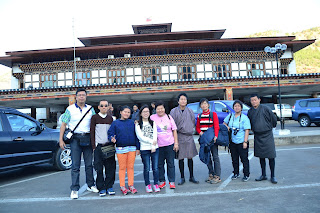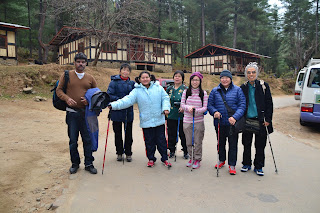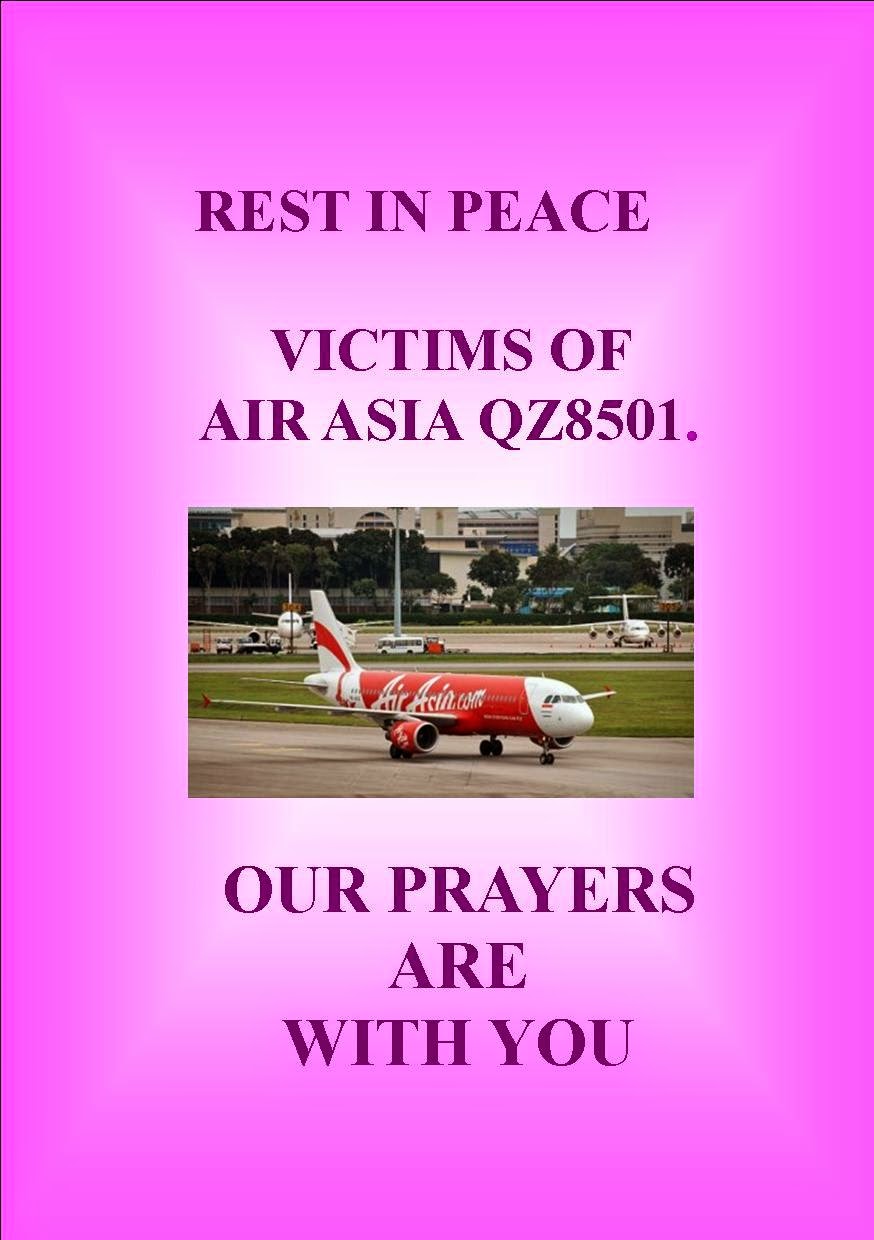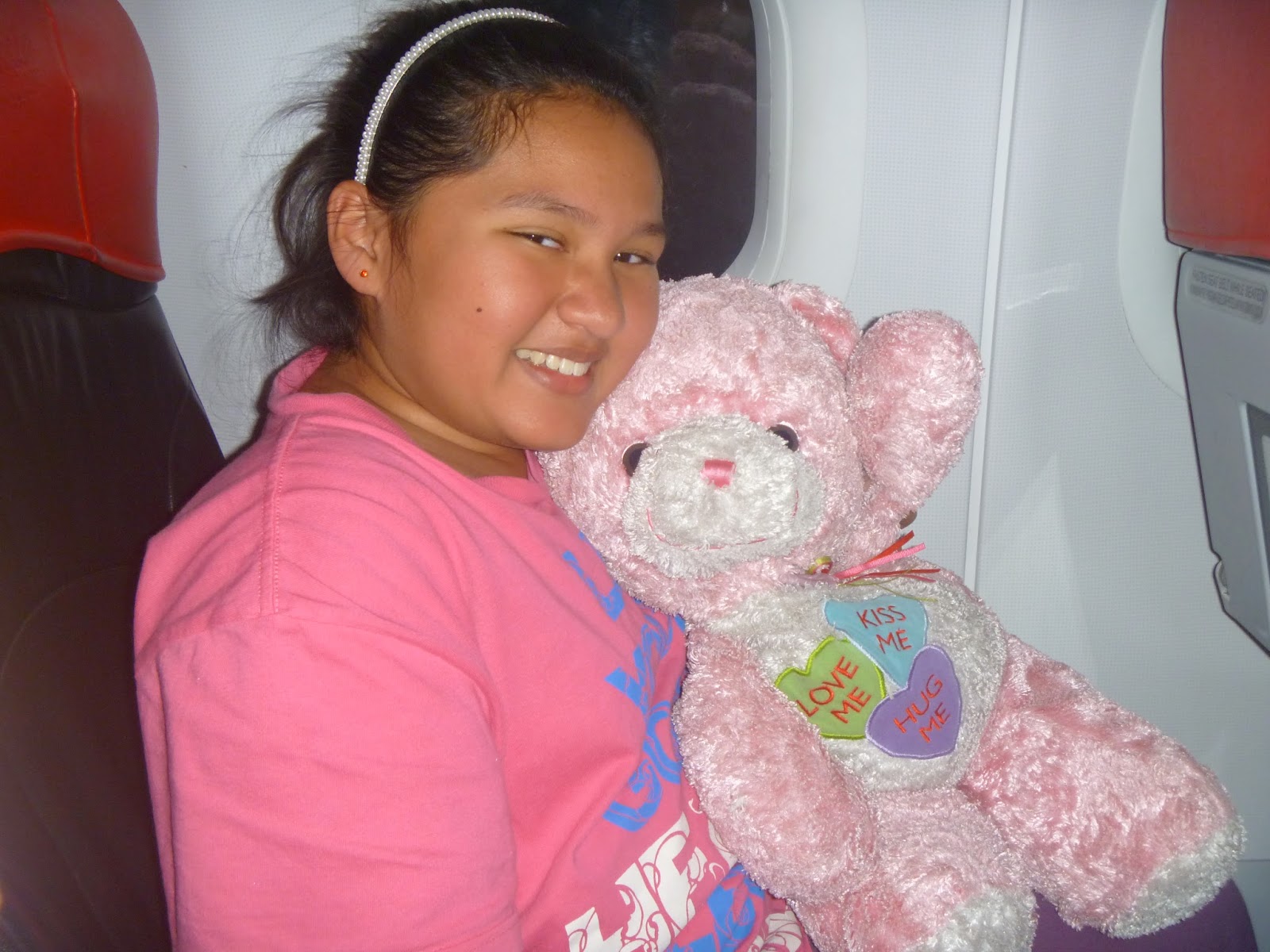During my school holidays in December 2014, I visited a
country which is very mythical, magical, mysterious and enchanting called
Bhutan. I was excited when my mother told me that we were going to Bhutan
because I had never heard of this place before. None of my friends knew about
this country. They thought that Bhutan is in Nepal. Ha ha ha ha !!!!! What a joke!!!! I did too at first.
Let me tell you about Bhutan . The
tiny Kingdom of Bhutan is known as “The Last Shangrila” on earth because of its
pristine and unspoiled environment and harmonious and cordial society. It is a
small country which is located on the southern slopes of the eastern Himalayas,
between the Tibet Autonomous Region of China and India.
I find Bhutan to be a unique country
because of its unique culture and clean environment. Do you know that Bhutan is
the world’s last remaining Bhuddist Kingdom? It is also the only Vajrayana
Bhuddist nation in the world which practises the teachings of Bhuddha.
His Majesty Jigme Singye Wangchuk,
the Fourth King of Bhutan has developed the philosophy of Gross National
Happiness. His Majesty declared in the 1970s that Gross National Happiness is
more important than Gross National Product. His Majesty wants his people to
live happily. WOW!!!!!! This is the only country in the world that has Gross
National Happiness. I reckon that this is the best philosophy in the world and
every leader in every country should follow this philosophy. Then we will have
no war but peace and harmony. YEAH!!!! Isn’t it amazing?
We flew past the Himalayan range and I even saw Mt. Everest.
After 1
hour, we reached Paro airport which is in Bhutan. When we came down from the
aeroplane, we had.........FRESH AIR!!!!!!!!!!!!! It was so
AWESOME!!!!!!!!!!!!
My mummy and I couldn't resist taking this beautiful photo of the royal couple.!
Our tour guide, Chekey and our driver, Kingka
were wonderful Bhutanese.
The drive out of the Paro International airport
feasted our eyes with superb scenery. It was absolutely BEAUTIFUL!!!!!!!!!!!
The trees were green, the river was crystal blue, everything was clean. Do you
know that Bhutan people do not slaughter animals, nor even kill mosquitoes? They are so
kind to animals and insects.
I am standing at the point where you can see the whole of Paro Airport.
On the
second day, we hiked up to Taktshang Monestery (Tiger Nest). No visit to Bhutan
would be complete without a trip to Taktshang Monastery which will take about
to two hours to hike up for the fit ones.
On the track to the monastery.
The monastery is perched on the edge
of a steep cliff which is about 900 metres above the Paro Valley. According to
local legend, in the 8th century,` Guru Rinpoche mounted on a flaming tigress
and flew to Paro Taktshang cliff in the form of Guru Dorji Drolo.
I rode on a horse because I was very
tired and not feeling too well. However, my parents and their friends hiked up.

We passed through
beautiful pine forest, spruce tree forest, trees festooned with Spanish Moss
and fluttering prayer flags.
We took about 9 hours to hike up a well-mantained trail in order to reachthe monastery.
The next place that we visited was Thimpu, a city at an altitude of 2,300 metres. It is also the capital of Bhutan. We drove up to the Kuensel P[hodrang (Bhuddha Point) which offered a panaromic view overlooking the Thimpu valley.
There was a huge Bhuddha statue
sitting majestically amidst the green hills.
 Here, we visited the 108 chortens which were built by the eldest Queen Mother, Her Majesty Ashi Dorji Wangmo Wangchuk, to honour and to commemorate the Bhutanese soldiers who were killed when fighting the Indian rebels in 2003.
Here, we visited the 108 chortens which were built by the eldest Queen Mother, Her Majesty Ashi Dorji Wangmo Wangchuk, to honour and to commemorate the Bhutanese soldiers who were killed when fighting the Indian rebels in 2003.This very breathtaking Dochula Pass is a famous tourists destination because it offers a stunning 360 degree panaromic view of the Himalayan mountain range. I was very fortunate to be able to admire the snowcapped mountains amidst the clear blue sky. It was stunning and beautiful. I will never forget this moment of beauty.
 Another fantastic place to visit is the Punakha Dzong, which means a big temple between two rivers. It was built in 1637 by Zhabdrung and this astounding fortress which is remarkably located between the rivers of Mo (Female) Chu (River) and Pho (Male) Chu.
Another fantastic place to visit is the Punakha Dzong, which means a big temple between two rivers. It was built in 1637 by Zhabdrung and this astounding fortress which is remarkably located between the rivers of Mo (Female) Chu (River) and Pho (Male) Chu.
What a sight
to behold!! It is simply magnificent and spectacular. Looking at the two
crystal clean rivers joining and the waters flowing swiftly past the temple is a
wonderful experience that I will always remember.
Also, we visited Thasichodzong in Thimpu, which means Fortress of Glorious Religion. It was built in 1641. It houses the secretariat building, the throne room and the office of the king, and the central monk body.
We also visited the temple here where the present
King and Queen were married. This temple
is beautiful and big.
Another interesting place that we
visited is the Mini Zoo in Thimpu. The Mini Zoo is actually a big forest
reserve. There are lots of tall pine trees.
I was lucky to see Bhutan’s
national animal, the Takin because they don’t usually come out to meet people.
It is an extremely rare member of the goat family.
Our trip to Bhutan was too short for Bhutan has so many
interesting places to visit. This has been a worthwhile trip and Bhutan is truly and
indeed a Heaven on Earth with its unspoilt and pristine nature and environment.
I am glad that we have two wonderful guides, Uncle Chekey and Uncle Kingka who
have made my trip a memorable one.
I hope to visit Bhutan again in the near future. See you again Bhutan!!!



















































